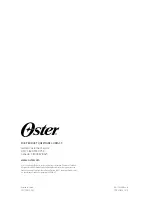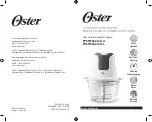
Changing the Compiler’s Behavior With Options
2-6
2.3 Changing the Compiler’s Behavior With Options
Options control the operation of both the shell and the programs it runs. This
section provides a description of option conventions and an option summary
table. It also provides detailed descriptions of the most frequently used op-
tions, including options used for type-checking and assembling.
The following apply to the compiler options:
-
Options are either single letters or two-letter pairs.
-
Options are
not
case sensitive.
-
Options are preceded by a hyphen.
-
Single-letter options without parameters can be combined. For example,
−
sgq is equivalent to
−
s
−
g
−
q.
-
Two-letter pair options that have the same first letter can be combined. For
example,
−
pe,
−
pf, and
−
pk can be combined as
−
pefk.
-
Options that have parameters, such as
−
u
name
and
−
i
directory
, cannot
be combined. They must be specified separately.
-
Options with parameters can have a space between the option and the
parameter or be right next to each other.
-
Files and options can occur in any order except the
−
z option. The
−
z op-
tion must follow all other compiler options and precede any linker options.
You can define default options for the shell by using the C_OPTION enviro-
nment variable. For a detailed description of the C_OPTION environment
variable, see section 2.4.1,
Setting Default Shell Options (C_OPTION)
, on
page 2-21.
1 summarizes all shell and linker options. Use the page references
in the table to refer to more complete descriptions of the options.
For an online summary of all the shell and linker options, enter
dspcl
with no
parameters on the command line.
Summary of Contents for TMS320C2x
Page 8: ...viii...
Page 69: ...2 47 C Compiler Description...
Page 159: ...6 36...
Page 226: ...8 6...
















































